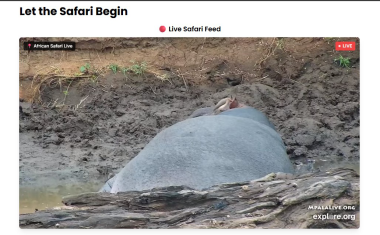Viewpoint: From Academic to Businessman
In a recent interview for our Visionaries series, we asked Savvas Chamberlain of Dalsa Corporation what it took for him to change from successful scientist to successful entrepreneur. There are some very enlightening business aspects in this history, so that we decided to publish this separately in our Viewpoint section.
In the early 1970's I developed the Silicon Devices and Integrated Circuits laboratory at the University of Waterloo. The research of this laboratory was successful and known world-wide. In this laboratory in the 1970's along with my graduate students we pioneered the basic fundamental theory of charge transfer in small geometry CCD devices. By the beginning of the 1980's we had small geometry CCD devices operating at 20 times faster than the state of the art.
In the 1970's, while at the University of Waterloo and through its Waterloo Research Institute (WRI), I did consulting work for IBM at Yorktown Heights on the design of CCD image sensor chips. I also did consulting work for the design and development of MOSFET technology at Northern Telecom in Ottawa. By the beginning of the 1980's I was regarded as a very successful academic, with many publications and patents that I had authored or co-authored, and as a world-wide known researcher. I had graduated numerous graduate students and had brought a lot of research funds to the University of Waterloo.
Even though my consulting work was economically very lucrative, I wanted my CCD technology to be used in manufacturing and commercial products so that it would proliferate, generate highly skilled jobs and also create value added wealth. I did not want my research results to stay in research publications, in filing cabinets and in old scientific journals.
In early 1980's I went to IBM and made them an offer. Since they had interest internally in CCD image sensors and since they paid me to design these CCD image sensor chips, I could help them transfer my technology to them and in addition create a commercial CCD image sensor business. They said this is a great idea. They would immediately look at the business case. After doing a marketing and business case study they came back to me and said, this is not a $100 million per annum business therefore they were not interested, but if I did it as business they would continue giving me design work. My next stop was Northern Telecom and I talked to them. Immediately, they said, this was a great idea and would get the business development person to look at it. They came back and said since it was less than a $50 million per year business they were not interested. But if I did it by myself they would continue giving me business.
I gave all this information to the WRI guys. They said they could help me set up a start-up company. I said to them, "What do I know about business? I am a technical guy." The challenge, however, to me was very attractive. To see my research results used commercially and to proliferate was very tempting.
I used some of our family money, and with the help of WRI I got some venture capital money, all used to buy computers and laboratory equipment. I used also a patent that was jointly owned by me and WRI. I hired some of my own grad students and other University of Waterloo students. Brian Doody, Dalsa's present CEO, was a Masters student from the University of Waterloo at the time, and joined me in 1985. While I was trying to raise venture capital money, they were asking me about a five year business plan. At that time, I had no clue about such business plans. All I knew was that I already had customers. I had to continue producing higher performance CCD image sensors than anybody else, get more customers, and gradually move the CCDs to standard products. I did not know about "pro forma balance sheets" or "income statements;" all I knew was "conservation of cash." The cash coming in should be greater than the cash going out. Later on I learned at the Harvard OPM business course that this was called "cash flow." Also I believed and continue to believe in operating fairly with everybody.
I feel that Dalsa is successful because I did not know that, (as was widely believed in the 1980's) you cannot succeed in semiconductors and electronics in Ontario, Canada.










